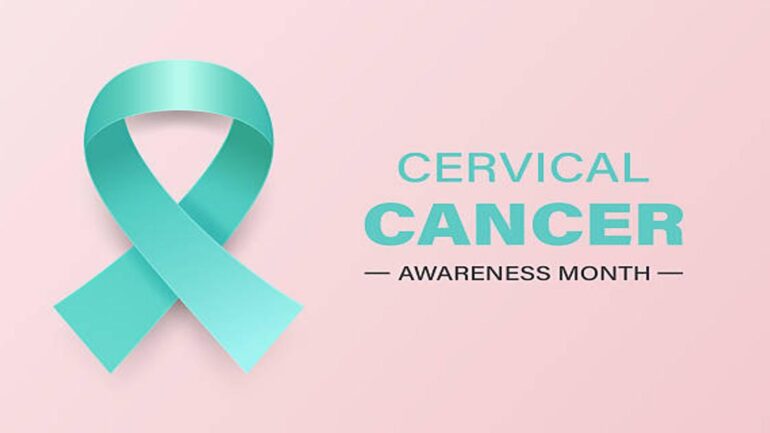Cervical Health Awareness Month 2025: A Strategic Priority for Healthcare Executives

- Posted by Greg Wahlstrom, MBA, HCM
- Posted in Health Observance Calendar
Where Equity, Innovation, and Women’s Health Governance Intersect
Published: January 03, 2025
Each January, Cervical Health Awareness Month highlights the ongoing need for proactive women’s health governance. For healthcare executives, this national observance offers more than a clinical reminder—it signals an opportunity to realign health equity efforts, community partnerships, and population health goals. Cervical cancer remains both one of the most preventable and tragically under-addressed women’s health concerns in the United States. By integrating this awareness into early Q1 strategy, healthcare leaders can drive systemic improvements in access, education, and early intervention.
According to the Centers for Disease Control and Prevention (CDC), nearly all cervical cancers are caused by HPV, a virus preventable through vaccination and regular screenings. Yet screening rates remain suboptimal in underserved areas. At Mount Sinai Health System, community-based outreach models that offer no-cost Pap smears and multilingual HPV education have seen significant gains in early detection. Executives must prioritize system-wide solutions to ensure culturally competent screening programs reach every demographic. As access remains fragmented, strategy must become more inclusive.
Technology is also transforming cervical health management. Digital pathology tools, AI-powered cytology platforms, and virtual follow-up systems are improving screening accuracy and closing diagnostic loops. At Kaiser Permanente, a machine learning pilot project is being tested to improve triage recommendations for abnormal Pap results, expediting care pathways. Healthcare executives evaluating AI investments should consider cervical screening as a test case for scalable innovation. After all, innovation that serves prevention is innovation that pays dividends—clinically and financially.
Workforce education is equally essential. As frontline nurses, primary care providers, and community health workers are the first line of communication on HPV and screening, training must be continuous. At Providence Health, cervical cancer CME modules have become part of annual competency updates for outpatient teams. Hospital leadership should formalize similar learning strategies to ensure every clinician understands both the science and the social drivers behind cervical cancer prevention. In this way, workforce empowerment becomes a care multiplier.
Health equity is a throughline. Cervical cancer disproportionately affects women of color, rural populations, and individuals without regular access to OB/GYN services. The National Cervical Cancer Coalition emphasizes the role of systemic bias and delayed care in rising late-stage diagnoses. At NYC Health + Hospitals, mobile screening units now partner with community organizations to bring care directly into historically excluded neighborhoods. For healthcare executives, these models are replicable—if leadership is intentional and metrics are tracked across time.
Financially, the case for prevention is undeniable. A 2024 report from the American Cancer Society estimates that late-stage cervical cancer treatment costs can be tenfold higher than early interventions. For hospital CFOs and strategy officers, the value proposition is clear: invest upstream or pay downstream. System-wide screening programs integrated into population health risk stratification models help ensure early intervention, better outcomes, and improved cost control. The ROI on prevention is not abstract—it’s actionable.
From a governance perspective, aligning January with action requires leadership. CEOs and COOs should ensure that communications, clinical governance, and population health departments are coordinated in their approach. Consider launching a public-facing initiative highlighting your organization’s cervical health commitments. Sutter Health has embedded Cervical Health Awareness Month into their systemwide women’s health campaign—offering free toolkits, webinars, and screenings. A strong internal and external push creates accountability, builds trust, and demonstrates values in motion.
As you review strategic priorities for Q1, Cervical Health Awareness Month is a valuable alignment point. It allows your organization to operationalize equity, reinforce evidence-based prevention, and optimize care continuity. As the Office on Women’s Health reminds us: “Prevention starts with information, access, and follow-through.” That’s a call every executive should answer.
Internal Links
- Redefining the Role of the Hospital CEO in 2025
- The Healthcare Workforce Crisis: Executive Solutions That Actually Work
External Links
- CDC – Cervical Cancer Awareness
- National Cervical Cancer Coalition
- American Cancer Society – Cervical Cancer
- Office on Women’s Health – Cervical Cancer
Discover More on Executive Engagement in Prevention
If your leadership team is shaping new strategies for women’s health, preventive care, and integrated community initiatives, explore our insights on redefining executive roles in 2025.



